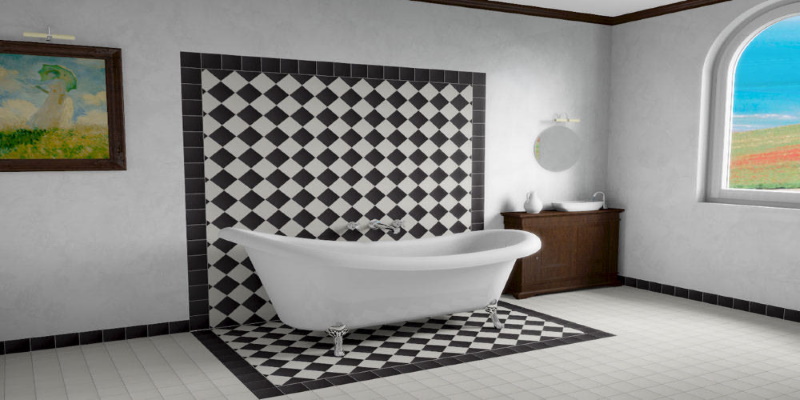Anti-Slip Floor Tiles Explained
When selecting floor tiles for a particular location, there are many factors that must be considered. They must be strong, durable, and aesthetically pleasing, but on the top of the list should be the anti-slip rating.
While not all floor tiles have an anti-slip rating, most have, and you should select floor tiles with an anti-slip rating suitable for their location. But note that some tiles with a higher anti-slip rating are harder to keep clean.
Measuring the slip value of tiles is both technical and complicated, as there are many variables, different standards, and different methods of measurement.
The ‘Shod-Foot’ Ramp Test
This is a test where a person with footwear walks on a ramp containing the floor tile which has been contaminated with a liquid. The angle of the ramp is adjusted until the person slips, thus giving the R rating, which is based on the coefficient of friction. The R rating of tiles goes from R9 to R13, with R9 having the least grip and R13 having the most grip.

(The HSE UK assessing the slip resistance of flooring advises that floors classified as “R9 (or in some instances R10) will be slippery when used in wet or greasy conditions.)
The Barefoot Ramp Test
This test is similar to the above Ramp Test but the person is barefoot and the results are graded A, B, and C.
Spanish Building Code
The Spanish Building Code has its own classification system which is based on the degree of slope and the surface contamination. It is graded Class 1, Class 2, and Class 3.
Choosing A Floor Tile
Floor tiles that fall into Group A/ R9/ or Class 1 would be suitable for living areas that are always dry.
Floor tiles that fall into Group B/ R10/ or Class 2 would be suitable for kitchens and other areas that are mostly dry.
Floor tiles that fall into Group C/ R11/ or Class 3 would be suitable for areas that are often wet, including porch, patio, and other outdoor areas.
Anything above R11 is for industrial or commercial use.
The bottom line is, if you are choosing a floor tile, check its anti-slip rating and, in the interest of safety, make sure the rating is suitable for the location.



